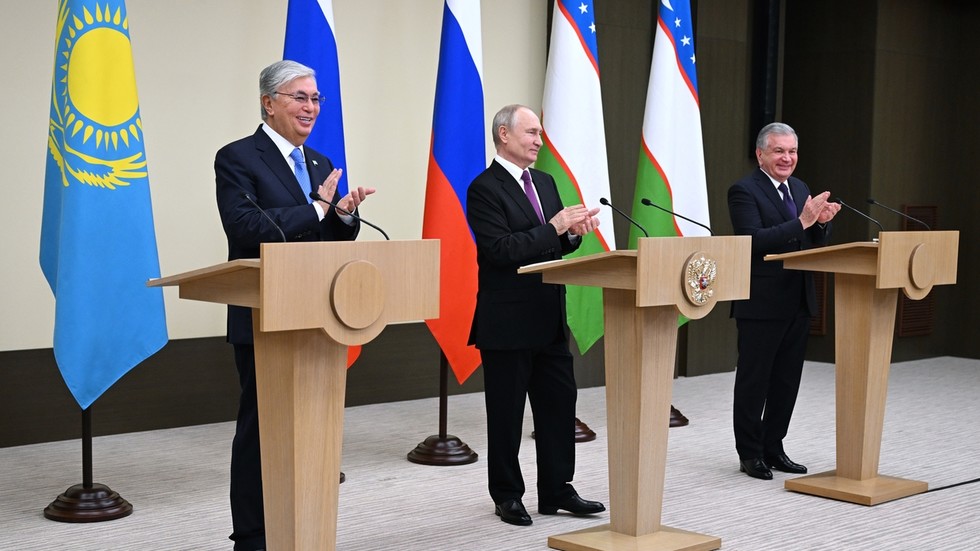
Moscow has set out its plans for cooperation with key allies in the region for the next 15 years, Gazprom’s CEO has said

From left, Kazakh President Kassym-Jomart Tokayev, Russian President Vladimir Putin and Uzbek President Shavkat Mirziyoyev take part in the ceremony marking the start of Russian gas supplies to Uzbekistan via Kazakhstan at the Novo-Ogaryovo state residence, outside Moscow, Russia. © Sputnik / Pavel Bednyakov
Russia is seeking long-term cooperation in natural gas supplies with Kazakhstan and Uzbekistan, Gazprom CEO Aleksey Miller has revealed.
Until recently, Russia’s dealings with its Central Asian allies could be described as short-term, Miller told Russia 1 TV in an interview released on Sunday. However, the countries have now set “the task of reaching a 15-year horizon,” he said.
Answering a reporter’s question on why Russian gas is now flowing to Central Asia and not the other way around, as it was in Soviet times, the Gazprom CEO pointed to Russia’s expansion of its natural resource base, which now ranks first in the world in terms of production.
“Secondly, we must understand that the countries of Central Asia are currently developing very dynamically. We understand the growth rate very well,” Miller added.
Earlier this month, he revealed that Gazprom is planning to expand natural gas supplies to Kazakhstan, Uzbekistan, and Kyrgyzstan through the Central Asia-Center (CAC) pipeline system, adding that the parties aim to establish a contractual basis for cooperation by mid-2024.
Built between 1960 and 1988, the CAC is a 4,892km onshore pipeline project operated by Gazprom. Its natural gas pipelines run from Turkmenistan via Uzbekistan and Kazakhstan to Russia.
READ MORE: Russian energy giant reveals strategy to replace EU markets
It has been estimated that Russian gas supplies to Central Asia could reach 20 billion cubic meters by 2030.
For more stories on economy & finance visit RT’s business section




